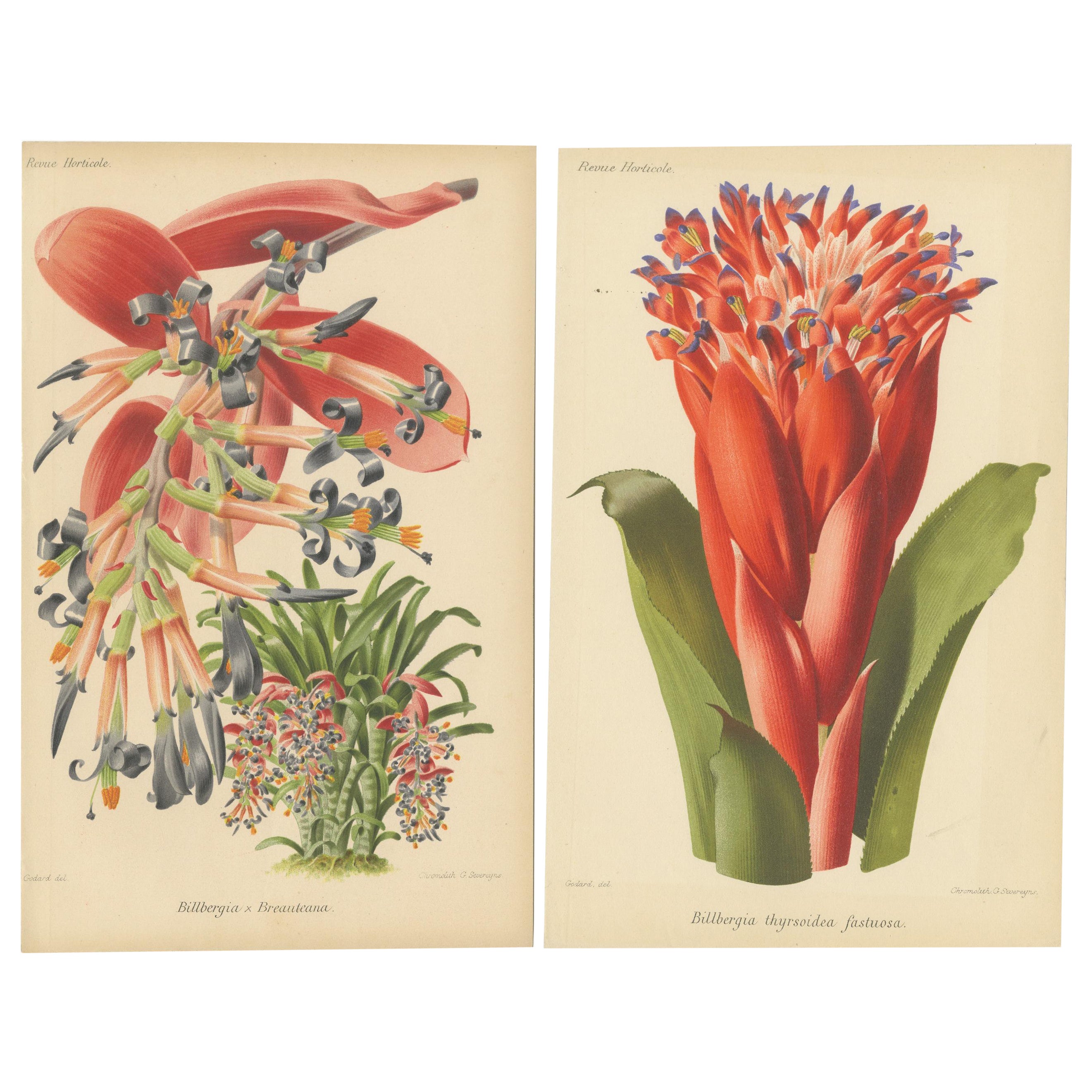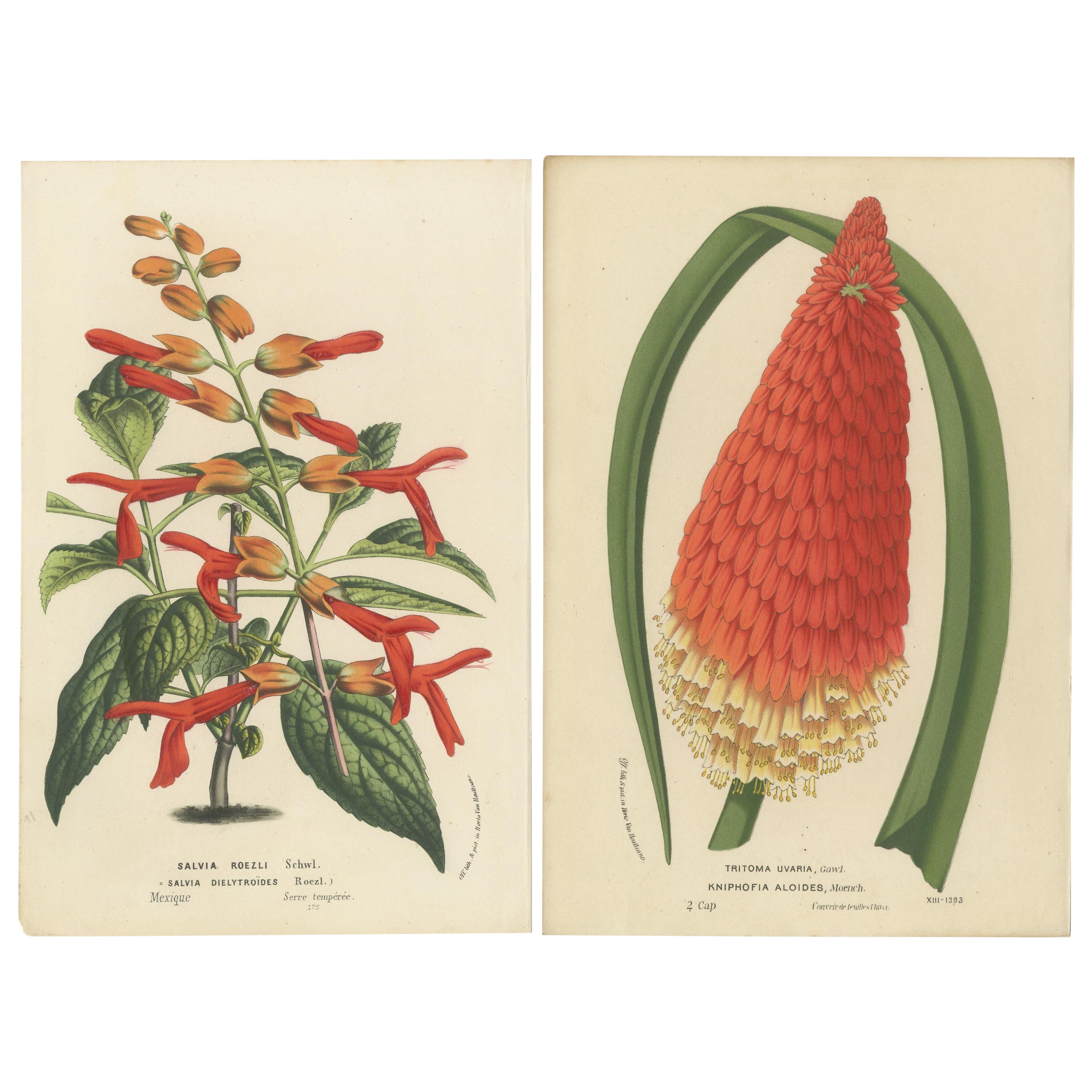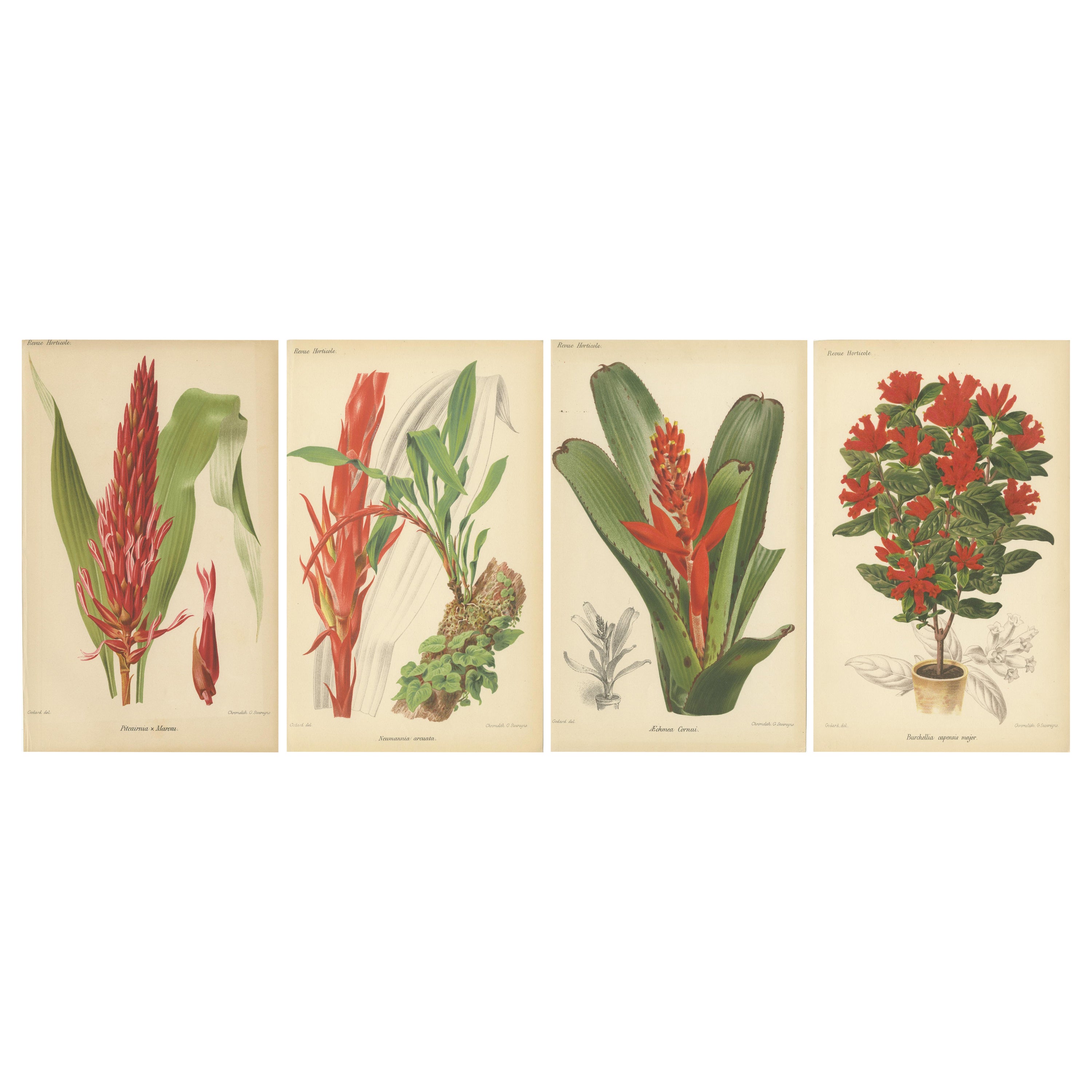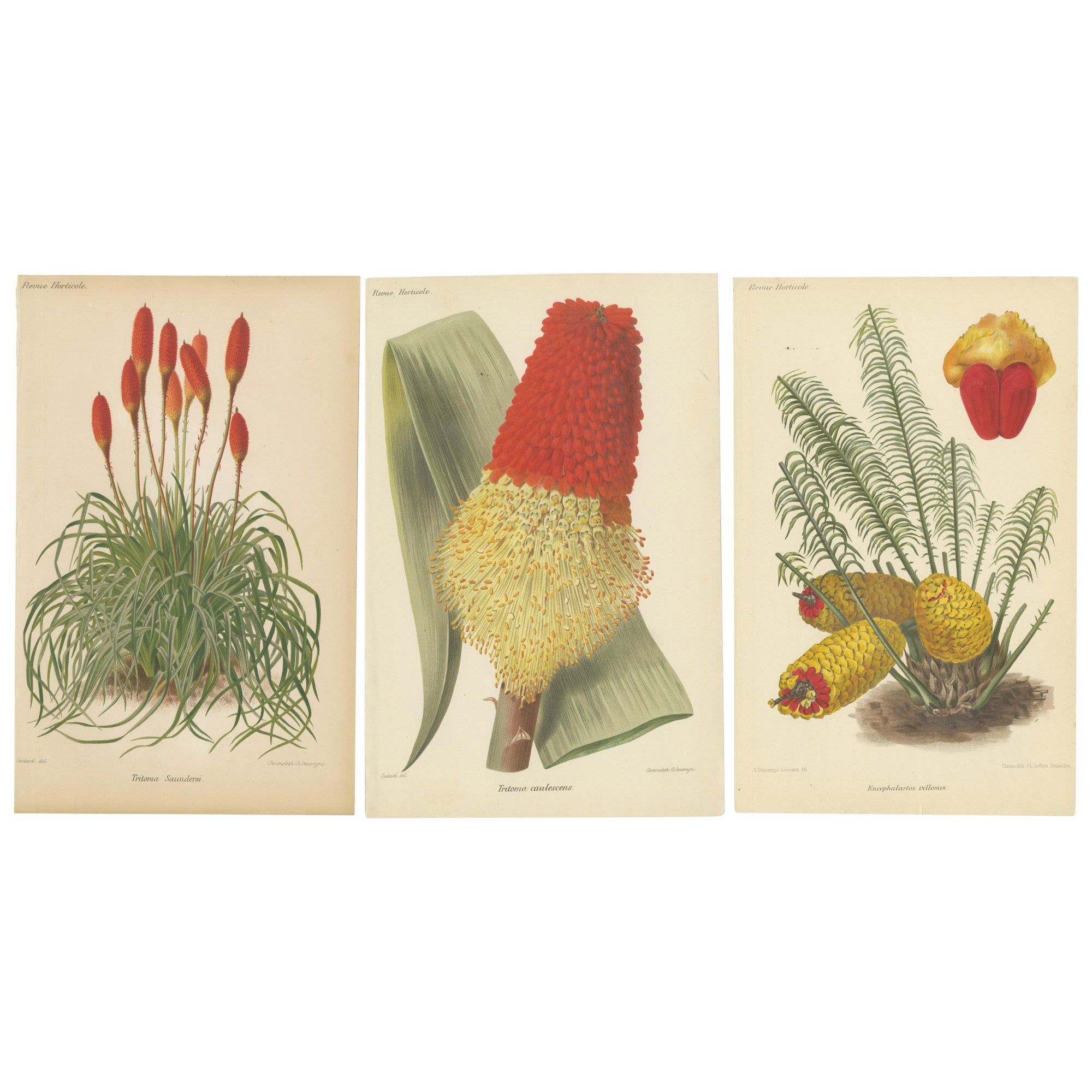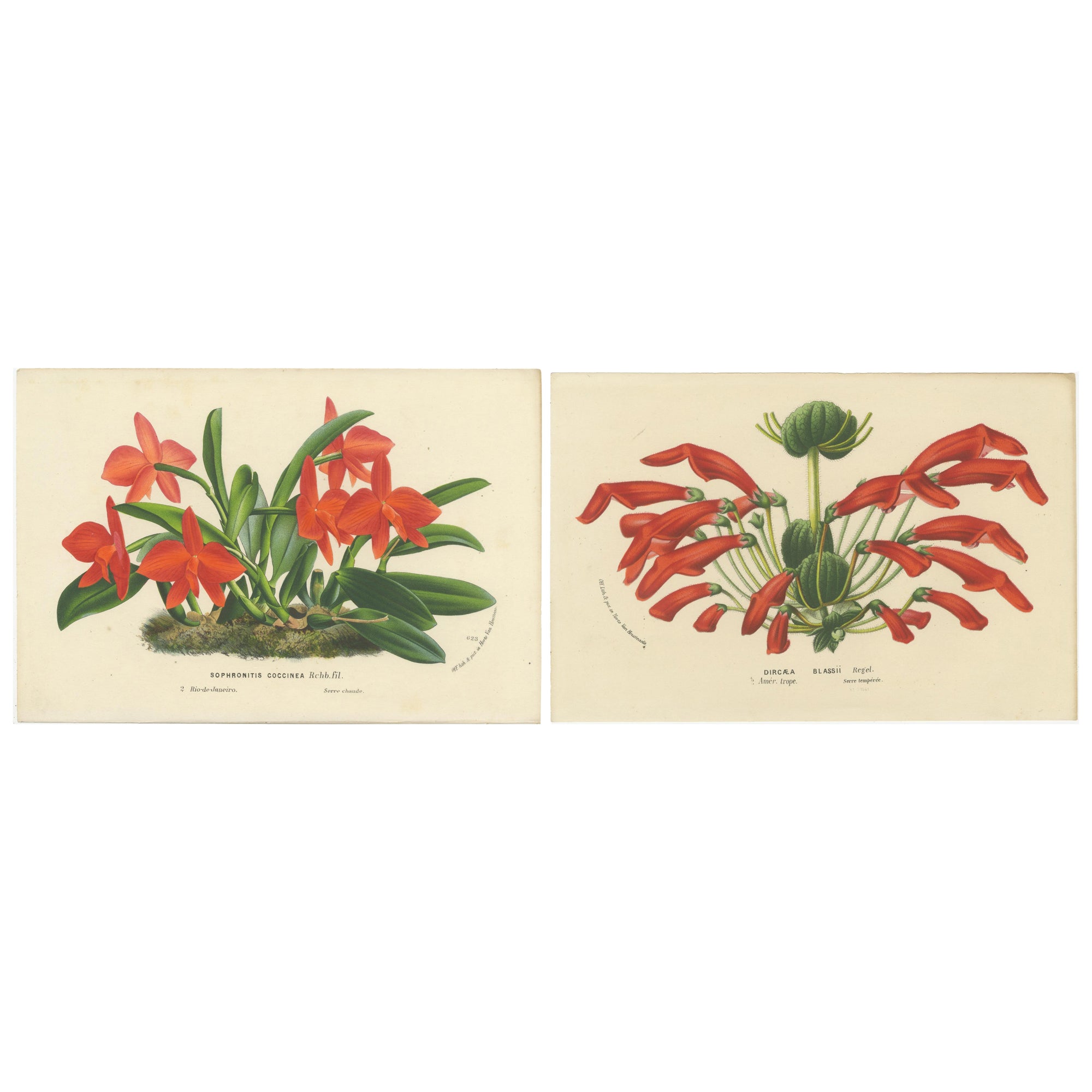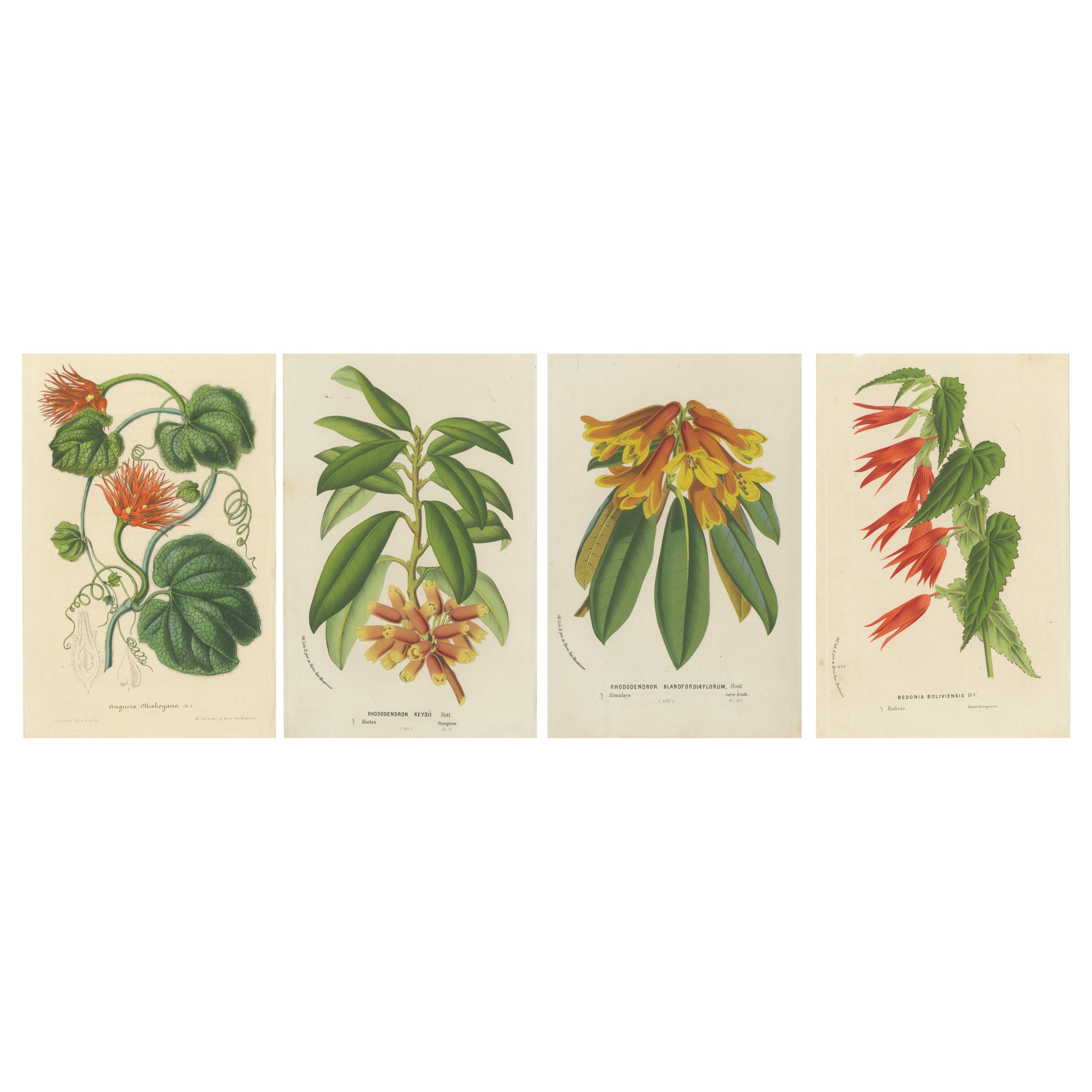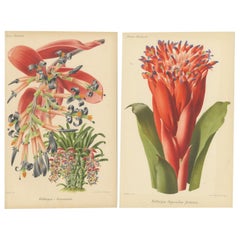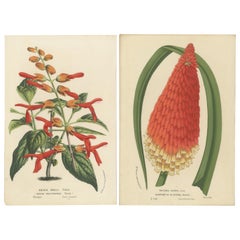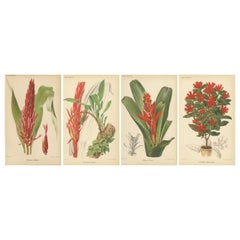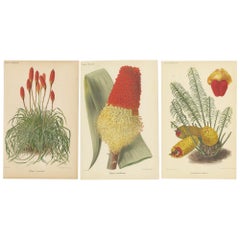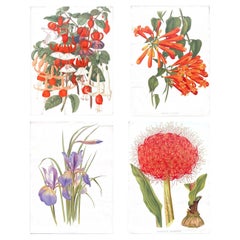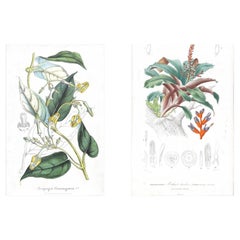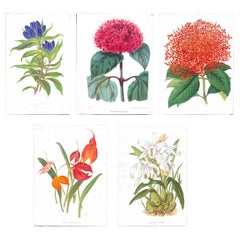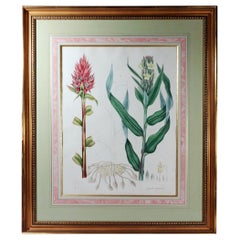Items Similar to Exotic Splendor: Hartweg's Sage, Flaming Torch, and Melinoni's Bromeliad, c.1855
Want more images or videos?
Request additional images or videos from the seller
1 of 10
Exotic Splendor: Hartweg's Sage, Flaming Torch, and Melinoni's Bromeliad, c.1855
$322.41per set
$403.02per set20% Off
£241.46per set
£301.83per set20% Off
€272per set
€340per set20% Off
CA$451.94per set
CA$564.93per set20% Off
A$497.94per set
A$622.42per set20% Off
CHF 257.76per set
CHF 322.20per set20% Off
MX$5,995.27per set
MX$7,494.09per set20% Off
NOK 3,263.88per set
NOK 4,079.86per set20% Off
SEK 3,066.21per set
SEK 3,832.77per set20% Off
DKK 2,071.44per set
DKK 2,589.30per set20% Off
About the Item
The prints are from "Revue Horticole," a prominent horticultural periodical known for its high-quality botanical illustrations, which served both educational and ornamental purposes. The illustrations were executed by the noted chromolithographer, P. de Pannemaeker or Severeyns, who were both key figures in the production of botanical art during the 19th century, often working for Belgian publications.
Details about the Maker, Publisher, and Publication:
- Maker: The chromolithographs were likely produced by P. de Pannemaeker or Severeyns, renowned for their expertise in chromolithography, a technique widely used in the 19th century for reproducing color in prints.
- Publisher: The publisher, "Revue Horticole," was a French journal that focused on the horticultural industry and botanical sciences, regularly featuring detailed botanical plates.
- Publication Date: These prints are from an unspecified volume but "Revue Horticole" was published in the 19th century, particularly thriving during the mid to late 1800s.
The three prints illustrate a selection of exotic plants, each unique in its floral architecture and horticultural appeal. Here is a closer look at each plant's identification and its botanical and cultural significance:
1. Hartweg's Sage (Stenomesson Hartwegi)
- Botanical Characteristics: This plant features elongated, slender green leaves with clusters of vibrant, tubular red flowers that dangle elegantly.
- Significance: Hartweg's Sage is admired for its striking flower display which adds a vivid splash of color to gardens. It is named after Karl Theodor Hartweg, a notable botanist and plant collector, reflecting its discovery during botanical explorations.
2. Flaming Torch (Kniphofia uvaria)
- Botanical Characteristics: Also known as Red Hot Poker or Torch Lily, this plant is famous for its bright, upright spires of densely clustered flowers that transition from fiery red at the top to yellow at the bottom.
- Significance: The Flaming Torch is a popular garden plant, particularly valued for its dramatic appearance and ability to attract pollinators such as hummingbirds. Its robust nature and striking inflorescence make it a favorite in ornamental horticulture.
3. Melinoni's Bromeliad (Aechmea melinonii)
- Botanical Characteristics: This bromeliad displays a large, dense cluster of star-shaped red flowers, surrounded by thick, fleshy green leaves.
- Significance: Native to tropical regions, Melinoni's Bromeliad is notable for its striking flower head and architectural foliage which make it an ideal candidate for tropical and subtropical gardens. It's also commonly used as an indoor plant due to its low maintenance needs and air-purifying qualities.
Broader Implications
These plants are not only significant for their aesthetic and ecological benefits but also for their role in the study of botany and the global trade of ornamental plants. Each species represents the botanical diversity explored during the 19th and early 20th centuries, often being featured in botanical magazines such as "Revue Horticole," which sought to document and share knowledge about rare and exotic plants from around the world.
Their inclusion in such detailed botanical illustrations also speaks to the era's advancements in botanical art, primarily through chromolithography—a technique that allowed these intricate details and vibrant colors to be reproduced faithfully, enhancing both scientific documentation and public appreciation of plant diversity.
Technique Used:
The technique used for these prints is chromolithography, a method for making multi-color prints. This process involves using multiple lithographic stones, each inked with a different color and carefully aligned to produce the final image. Chromolithography was celebrated for its ability to produce vibrant, detailed, and accurate representations of original artworks, making it particularly suited for detailed botanical illustrations like those in "Revue Horticole."
These factors combine to make the prints not only a beautiful artistic addition but also a valuable educational tool for those interested in botany and horticulture.
- Dimensions:Height: 9.85 in (25 cm)Width: 6.3 in (16 cm)Depth: 0 in (0.02 mm)
- Sold As:Set of 3
- Materials and Techniques:
- Place of Origin:
- Period:
- Date of Manufacture:circa 1855
- Condition:Condition: Very good, given age. General age-related toning and/or occasional minor defects from handling. Please study scan carefully.
- Seller Location:Langweer, NL
- Reference Number:Seller: BG-13761-19, BG-13761-20, BG-13761-211stDibs: LU3054341424792
About the Seller
5.0
Recognized Seller
These prestigious sellers are industry leaders and represent the highest echelon for item quality and design.
Platinum Seller
Premium sellers with a 4.7+ rating and 24-hour response times
Established in 2009
1stDibs seller since 2017
2,667 sales on 1stDibs
Typical response time: <1 hour
- ShippingRetrieving quote...Shipping from: Langweer, Netherlands
- Return Policy
Authenticity Guarantee
In the unlikely event there’s an issue with an item’s authenticity, contact us within 1 year for a full refund. DetailsMoney-Back Guarantee
If your item is not as described, is damaged in transit, or does not arrive, contact us within 7 days for a full refund. Details24-Hour Cancellation
You have a 24-hour grace period in which to reconsider your purchase, with no questions asked.Vetted Professional Sellers
Our world-class sellers must adhere to strict standards for service and quality, maintaining the integrity of our listings.Price-Match Guarantee
If you find that a seller listed the same item for a lower price elsewhere, we’ll match it.Trusted Global Delivery
Our best-in-class carrier network provides specialized shipping options worldwide, including custom delivery.More From This Seller
View AllStunning Bromeliads: Queen's Tears and Flaming Torch in Artful Display, c.1855
Located in Langweer, NL
The prints are from "Revue Horticole," a prominent horticultural periodical known for its high-quality botanical illustrations, which served both educational and ornamental purposes....
Category
Antique 1850s Belgian Prints
Materials
Paper
$213 Sale Price / set
25% Off
Vivid Visions: Roezl's Sage and Red Hot Poker in Botanical Art, circa 1875
Located in Langweer, NL
The two prints depict vibrant and distinctively shaped flowers, rendered with the meticulous detail characteristic of chromolithography from the 19th century. Here’s a description of...
Category
Antique 1870s Prints
Materials
Paper
$227 Sale Price / set
20% Off
Exotic Botanicals: Pitcairnia, Neumannia, Echnea, and Burchellia, circa 1880
Located in Langweer, NL
These chromolithographs were published in the "Revue Horticole" where they showcase an exquisite level of detail and vibrant color, typical of high-quality chromolithographic printin...
Category
Antique 1880s Dutch Prints
Materials
Paper
$312 Sale Price / set
40% Off
Exquisite Botanicals from Revue Horticole: A 19th-Century Garden Showcase
Located in Langweer, NL
Magnificent Botanical Chromolithographs from Revue Horticole, Circa 1885
Artist and Lithographer Details:
- Artist (Del. - Delineavit): The mention of "Godard del." signifies that ...
Category
Antique 1850s Prints
Materials
Paper
$322 Sale Price / set
20% Off
Botanical Vintage Prints of Scarlet Sophronitis and Tropical Bloom, c.1845
Located in Langweer, NL
The prints are from Louis Van Houtte's and Charles Lemaire's "Flore des Serres et des Jardins de l'Europe," a detailed collection of botanical lithographs showcasing plants grown in ...
Category
Antique 1840s French Prints
Materials
Paper
Lush and Vibrant: A Collection of Exotic Botanical Illustrations, circa 1875
Located in Langweer, NL
The prints depict a selection of exotic plants with a remarkable detail and vibrant color, showcasing the beauty and diversity of botanical life. Each illustration is a testament to ...
Category
Antique 1870s Prints
Materials
Paper
$388 Sale Price / set
20% Off
You May Also Like
Original 1880s Botanical Print of Hæmanthus Kalbreyeri — Vibrant Antique Chromol
Located in Fukuoka, JP
A striking original chromolithograph from the 1880s, this botanical print features the dramatic Hæmanthus kalbreyeri, also known as the blood lily. Characterized by its intense red s...
Category
Antique 19th Century French Prints
Materials
Paper
Set of Two Rare Botanical Engravings by D’Orbigny — 1849
Located in Fukuoka, JP
Set of Two Rare Botanical Engravings by D’Orbigny — Dictionnaire Universel d’Histoire Naturelle, Paris, 1849
An exquisite pair of original hand-colored botanical engravings from the...
Category
Antique 19th Century French Prints
Materials
Paper
Bignonia venusta – Antique Botanical Chromolithograph, 1880s
Located in Fukuoka, JP
A striking original botanical print from the 1880s, featuring Bignonia venusta, also known as flame vine or orange trumpet vine. This brilliantly colored illustration captures the dr...
Category
Antique 19th Century French Prints
Materials
Paper
William Roscoe Botanical Large Print of Tropical Plant, Zingiber Capitatum
Located in Downingtown, PA
William Roscoe Botanical Large Print,
Zingiber Capitatum,
Monandrian Plants of the Order Scitamineae,
1828
A spectacularly large and beautifully framed botanical print. The subjects...
Category
Antique Early 19th Century English Regency Prints
Materials
Paper
Torch Lily, English antique red flower botanical chromolithograph, 1895
By Frederick William Hulme
Located in Melbourne, Victoria
'Torch Lily'
Process print from Frederick William Hulme’s ‘Familiar Wild Flowers’, circa 1890.
Hulme was known as a teacher and an amateur botanist. He was the Professor of Freehan...
Category
Late 19th Century Naturalistic Still-life Prints
Materials
Lithograph
19th C. Hand Colored Botanical "Alpinia Nutans Rosc." Lithograph
Located in San Francisco, CA
19th C. hand colored Botanical "Alpinia Nutans Rosc." Lithograph
Fine antique hand colored lithograph
The color is still strong after all these years
The lithograph comes un...
Category
Antique Late 19th Century English Prints
Materials
Paper
More Ways To Browse
Tibetan Deity
Tiffany Gold Clock
Tiger Porcelain
Tip Tray
Tobacco Poster
Tonala Folk Art Pottery
Tool Chest Cabinet
Toraja Panel
Tramp Art Framed Art
Travel Clock Case
Used Adjustable Beds
Used Bath Water
Used Bridal Veil
Used Tennis Balls
Venetian Bombe
Vintage Apple Blossom
Vintage Asian Art Panels
Vintage Black Ceramic Cats
